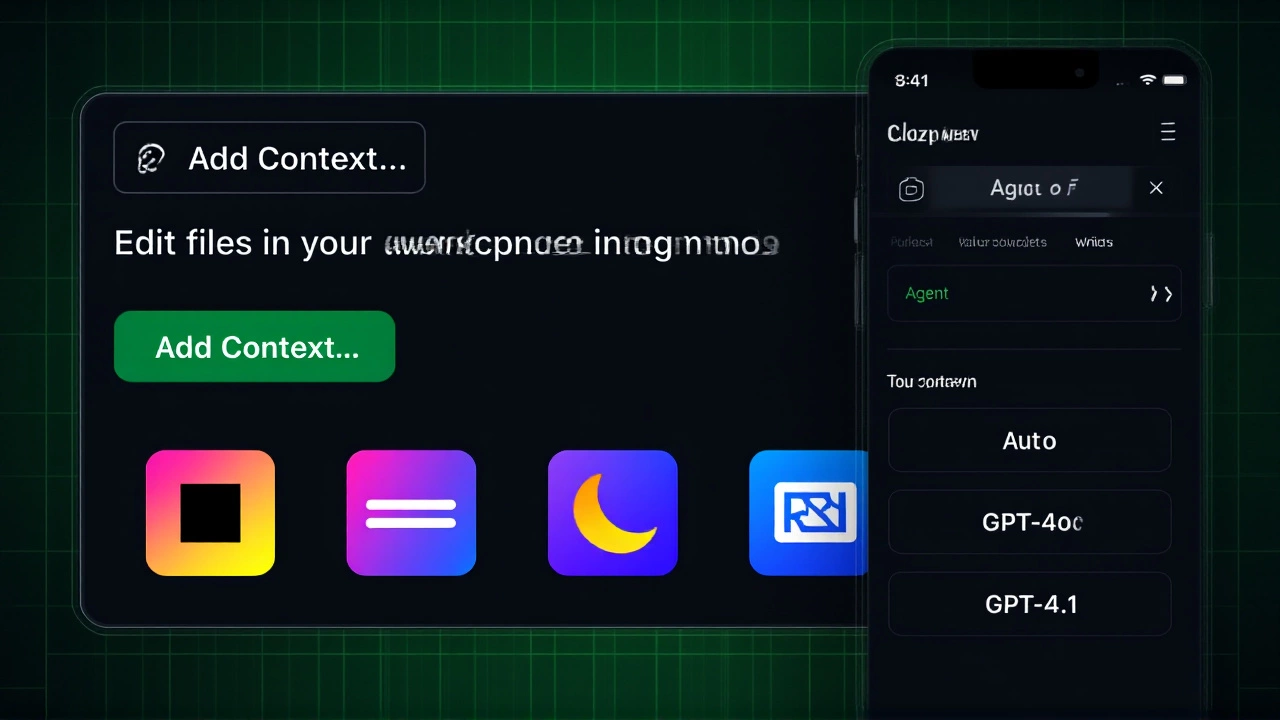Microsoft just turned its AI assistants into digital office workers — not just answering questions, but clicking buttons, filling forms, and navigating websites on their own. In a sweeping set of updates rolled out between late September and October 2025, the company unveiled Microsoft’s most ambitious leap yet in enterprise AI: Computer Use automation in Copilot Studio, powered by vision and reasoning, not just APIs. For the first time, an AI agent can open Excel, log into a legacy HR portal, extract data, and email a report — all without a single line of code. And it’s not just about automation. Microsoft also quietly integrated Anthropic’s Claude models into Microsoft 365 Copilot, breaking its exclusive reliance on OpenAI’s tech. This isn’t a minor tweak. It’s a strategic pivot.
AI That Can Click, Type, and Navigate — No API Needed
At the heart of September’s updates is Computer Use, now in public preview for U.S.-based environments. Think of it as giving your AI assistant a virtual mouse and keyboard. Previously, automation required APIs, webhooks, or custom connectors. Now, if a system has a graphical interface — even a 15-year-old internal tool no one remembers how to update — Copilot Studio can interact with it. A claims processor can now train an agent to log into a claims portal, pull patient records, cross-reference insurance codes, and auto-generate summaries. No developer needed. No API key. Just natural language instructions like, "Fill out this form and email the results to finance."
The technology, dubbed Computer-Using Agents (CUA), combines computer vision with LLM reasoning. It doesn’t just recognize a button — it understands context. If the button says "Submit," and the form is incomplete, the agent won’t click it. It’ll flag the missing field. This is a quantum leap from rule-based bots. And it’s not theoretical. Early testers at UnitedHealth Group reported a 68% reduction in manual data entry tasks for claims reconciliation — a process that used to take 45 minutes per case.
Claude Joins the Party: Microsoft Breaks the GPT Monopoly
Here’s the twist: Microsoft didn’t just upgrade its own models. It opened the door to competitors. Starting in late September 2025, Microsoft 365 Copilot users in Researcher mode can now choose between GPT-4o and Claude 3.5 Sonnet. The move, confirmed in Microsoft’s official release notes, signals a new era of model flexibility. Organizations concerned about vendor lock-in, data residency, or response style can now pick the AI that best fits their needs.
"This is a game changer," said João Ferreira, tech analyst at HANDS ON tek, in a YouTube breakdown published October 1, 2025. "For years, Microsoft’s AI was synonymous with OpenAI. Now, they’re saying, ‘We don’t care whose model you trust — as long as it works in our ecosystem.’ That’s a power play."
It’s also a practical one. Claude 3.5 excels at long-context analysis — ideal for reviewing legal documents or research papers — while GPT-4o remains stronger in multimodal tasks. With both available, enterprises can optimize for task, not vendor.
Code Interpreter Goes Global — and So Does File Upload
Another major milestone: the code interpreter has reached general availability in both Copilot Studio and its lightweight sibling, Copilot Studio lite. Makers can now describe a data task in plain English — "Compare Q3 sales across regions and highlight outliers" — and the AI generates, edits, and runs Python code automatically. The results? A sales manager in London uploaded a 200-page PDF of regional reports and asked for trends. Within 90 seconds, the agent extracted tables, plotted graphs, and emailed a summary with actionable insights.
File upload support now includes Excel, CSV, and PDF formats. Previously, users could only feed structured data. Now, unstructured documents — contracts, invoices, research papers — can be analyzed directly. The agent doesn’t just summarize; it cross-references, calculates, and even suggests corrections.
What’s Coming: Approvals, Admin Skills, and the End of GPT-4o
The updates don’t stop in October. Here’s the roadmap:
- October 3, 2025: Enhanced connectors for Power Apps go live — letting makers build custom integrations with third-party tools like SAP and Salesforce without code.
- October 6–7, 2025: Two new SharePoint Admin Center skills roll out: step-by-step guidance for site setup and multi-variable site search to find documents by metadata, owner, and compliance tag.
- October 15, 2025: Multistage approvals in Copilot Studio become generally available — think HR onboarding workflows that auto-route documents to legal, finance, and IT.
- October 27–31, 2025: GPT-4o is retired in Copilot Studio for generative orchestration. Users must migrate to GPT-4o-mini or Claude 3.5.
And then there’s Microsoft 365 Copilot’s Memory update — launching in October. It remembers your preferences, past requests, and even your tone. Ask for "a summary like last time," and it’ll replicate your preferred style. No need to retrain it. It learns from chat history — with full user control over what’s stored.

Why This Matters Beyond IT Departments
This isn’t just about making IT teams more efficient. It’s about democratizing automation. A small nonprofit in rural Kansas can now use Copilot to pull donor data from a clunky CRM, generate thank-you letters, and schedule follow-ups — all without hiring a developer. A nurse in a hospital in Ohio can ask Copilot to summarize a patient’s 87-page medical history from scanned PDFs and flag potential drug interactions.
And the analytics? Brilliant. Copilot Studio now surfaces unanswered questions in its dashboard — highlighting knowledge gaps before users even complain. One financial services firm found that 42% of employee queries about expense reports were unanswerable. Within two weeks of updating their knowledge base, support tickets dropped by 58%.
What’s Next? Autonomous Agents and Tuning
Microsoft’s 2025 Release Wave 2 (October 2025–March 2026) hints at even bigger things: autonomous agents that don’t just respond — they initiate. Imagine an AI that notices a spike in customer complaints about billing delays and automatically triggers a workflow to audit the system, notify the team, and draft a customer apology email — all without being asked.
And then there’s Copilot Tuning — a new feature letting organizations fine-tune models using their own internal data. Training an AI on your company’s tone, jargon, and compliance rules? That’s coming. Soon.
Frequently Asked Questions
Can Copilot Studio really replace human workers?
Not replace — augment. The Computer Use feature automates repetitive, rule-based tasks like data entry or report generation, freeing humans for judgment-heavy work like client negotiations or policy decisions. Microsoft’s own internal testing shows employees using these tools report 30–40% more time for strategic tasks. The goal isn’t to eliminate jobs, but to elevate them.
Do I need special training to use these new AI features?
No. The interface is designed for non-developers. You can build an agent by describing what you want in plain English. For advanced users, the code interpreter lets you tweak Python logic — but it’s optional. Microsoft’s training modules are built into the platform, with guided walkthroughs for common tasks like automating Excel reports or managing approvals.
Why is Microsoft retiring GPT-4o in Copilot Studio?
GPT-4o is being phased out to streamline the AI stack and reduce costs. Microsoft’s new GPT-4o-mini model offers 90% of the performance at half the price and better speed. The retirement also pushes users toward the more flexible Claude integration. It’s a business decision — not a technical failure. Users have until October 31, 2025, to migrate.
Are these updates available worldwide?
Most are — except Computer Use, which is currently limited to U.S.-based environments due to regulatory and infrastructure constraints. Microsoft plans to expand globally in 2026. The code interpreter, file upload, and Claude integration are available everywhere. Admins should check the Power Platform admin center for regional availability flags.
How does this affect data privacy and compliance?
Microsoft emphasizes that all AI interactions remain within your tenant’s boundaries. Data uploaded to Copilot Studio isn’t used to train public models. Compliance features like Entra ID integration, audit logs, and retention policies remain intact. The Memory update even lets users delete chat history on demand. For regulated industries, Microsoft offers a compliance dashboard to monitor AI usage against GDPR, HIPAA, and SOC 2 standards.
What’s the cost of using these new features?
Access requires a Microsoft 365 E3/E5 or Copilot Pro license. The code interpreter and file upload are included at no extra cost. Computer Use and advanced connectors use Copilot credits, which are allocated per user monthly. A typical knowledge worker gets 1,000 credits per month — enough for about 50 complex automation tasks. Admins can adjust limits in the Power Platform admin center.
